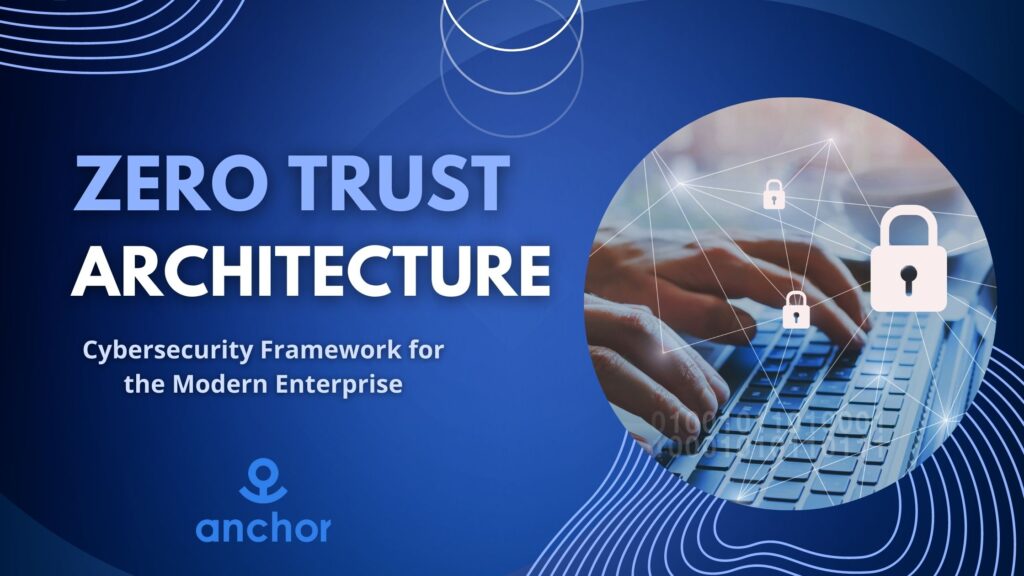Key Takeaways:
- The Zero Trust model enhances network security by continuously verifying access requests.
- Businesses can minimize threats and secure sensitive data with Zero Trust principles.
- Zero Trust is vital for safeguarding hybrid work environments and remote access.
- Advanced security measures come with their own set of challenges and deployment considerations.
Understanding Zero Trust in Today’s Cyber Landscape
In a time characterized by digital transformation, the necessity for innovative cybersecurity tactics is increasingly urgent. The traditional “trust but verify” philosophy is inadequate against today’s sophisticated threats. This is where the Zero Trust network architecture (ZTNA) changes the game, placing “verify and never trust” at its core. With the advent of increasingly sophisticated cyber threats, understanding what is ZTNA becomes crucial as it represents a paradigm shift, serving as a robust defense mechanism by continuously verifying every access attempt from inside and outside the network.
As organizations become more dispersed and cloud-oriented, attackers exploit vulnerabilities more efficiently. The rise of ZTNA signifies a move towards a security model that is resilient and flexible enough to adapt to a myriad of potential threats. Companies today are investing more in ensuring their systems are fortified against breaches.
The Core Principles of Zero Trust
Zero Trust is based on a firm belief in the “Never trust, always verify.” This belief states that every access request is carefully examined and confirmed regardless of where a user is physically or within the network. The hallmark of lies in the meticulous validation of every user, machine, and network flow, which sidesteps the traditional reliance on perimeter defenses. In practice, this means implementing stringent identity verification protocols and micro-segmentation within networks to restrict user access to only what is necessary, reducing the risk potential should any network segment become compromised.
Integral to this is the principle of least privilege, which dictates that users have access only to the data and resources essential for their roles. This principle curtails opportunities for internal threats and is a cornerstone in preventing lateral movement within a network that can lead to systemic breaches. Zero Trust environments can swiftly detect anomalies by continuously monitoring access patterns and behavior, adding another layer of proactive defense.
Why Businesses Are Adopting Zero Trust
Historically, organizations have leaned heavily on perimeter-based defenses, but the complexity of modern networks demands more. Businesses are now recognizing this need and turning to architectures to face the multifaceted challenges of today’s cyber threats. A significant impetus behind this shift is the rise in the frequency and sophistication of cyber attacks, necessitating robust, airtight security regimes. According to insights shared by CSO Online, businesses gain a substantial edge by implementing Zero Trust’s meticulous access management protocols, drastically reducing their vulnerability to breaches.
The organizational benefits of are twofold: heightened security and operational efficiency. Zero Trust helps businesses safeguard sensitive data against unauthorized access by mandating strict access controls and continuous monitoring.
Zero Trust and the Age of Remote Work
The unprecedented shift to remote work in recent years has brought about a seismic transformation in how businesses operate, compelling a reassessment of cybersecurity strategies. Traditional security models that depended on perimeter defenses fail to adequately secure distributed workforces accessing company systems from various remote locations. Under these circumstances, architectures offer a critical advantage by maintaining rigorous access controls that verify every user, every connection, and every network access, regardless of location.
By implementing Zero Trust principles, companies can effectively control and reduce the dangers linked with mobile and remote work settings. This approach ensures the network remains secure even if a device or connection point exhibits vulnerability. The growing use of cloud apps and services highlights the importance of Zero Trust, enabling firms to offer safe, adequate access to remote employees without compromising user experience or security robustness.
Addressing Challenges in Zero Trust Implementation
While presents numerous advantages, it is not a turnkey solution and poses several challenges that organizations must address during implementation. One primary challenge is overcoming the inertia of existing IT infrastructure and cultural inertia within organizations. Transitioning to Zero Trust requires upgrading and, in some cases, overhauling legacy systems to accommodate continuous verification and authentication processes.
A significant challenge is fostering a cultural shift towards security awareness and adoption within the company. Employees must be educated on new security protocols and understand the importance of these changes, ensuring compliance and mitigating human error—the weakest link in cybersecurity. Success in these areas empowers organizations to realize the full potential of Zero Trust, transitioning smoothly to a more secure operational state.
Future-Proofing Networks with Zero Trust
The perpetual evolution of cyber threats necessitates that businesses continuously adapt and strengthen their defense mechanisms to protect their digital assets. Zero Trust provides a forward-thinking security framework adept at evolving alongside the threat landscape. Prioritizing data integrity and access restrictions fortifies networks preemptively against potential threats, rendering cyber attacks less effective.
Future-proofing networks go beyond merely installing robust security barriers. It encompasses adopting a proactive security mindset that anticipates advancements in threat methodologies and counteracts them. Industries everywhere are beginning to embrace this shift, with Zero Trust offering the dynamic, adaptable security solution needed to uphold comprehensive cybersecurity in the face of an uncertain digital future.
Getting Started with Zero Trust
Embarking on a Zero Trust journey requires a strategic and systematic approach, starting with a comprehensive evaluation of the organization’s security posture. This initial assessment should identify critical assets, sensitive data, and existing vulnerabilities to establish a foundational understanding of where improvements are most needed. IT teams must work closely with organizational leaders to ensure alignment on integrating Zero Trust principles into the existing technological and organizational infrastructure.
Subsequently, fostering collaborative engagement across all levels of the organization is essential. By encouraging stakeholder buy-in and educating employees about the principles and benefits of organizations can create a security-conscious culture that supports and sustains the new security architectures being implemented. Such a strategy maximizes Zero Trust’s effectiveness and facilitates its integration into the enterprise environment.
The Continuous Evolution of Zero Trust
Zero Trust is not a static solution or operates in isolation within a network. It is a continually evolving philosophy that adapts to the ever-shifting dynamics of the cybersecurity landscape. This ongoing adaptability is perhaps Zero Trust’s greatest strength, allowing it to integrate the latest technological advancements and respond robustly to emerging threats.
At the heart of this evolution is the advent of new technologies and techniques that enhance Zero Trust’s effectiveness. From advanced analytics and artificial intelligence for anomaly detection to blockchain for secure transactions, frameworks are embedding the latest innovations to remain at the forefront of cybersecurity. By strategically integrating these advancements, organizations are well-positioned to maintain solid and resilient defenses, ensuring comprehensive security in an ever-changing digital arena.

